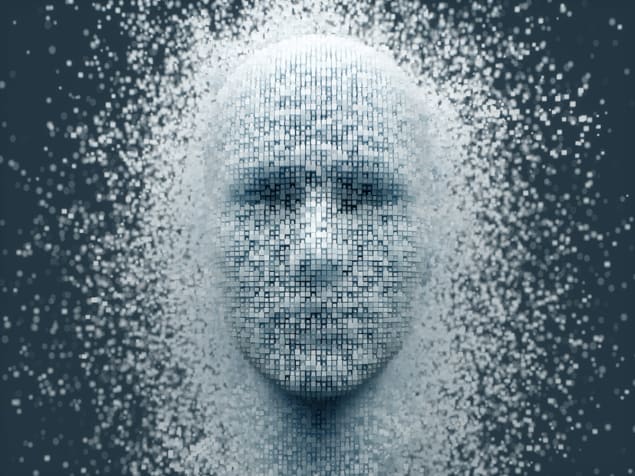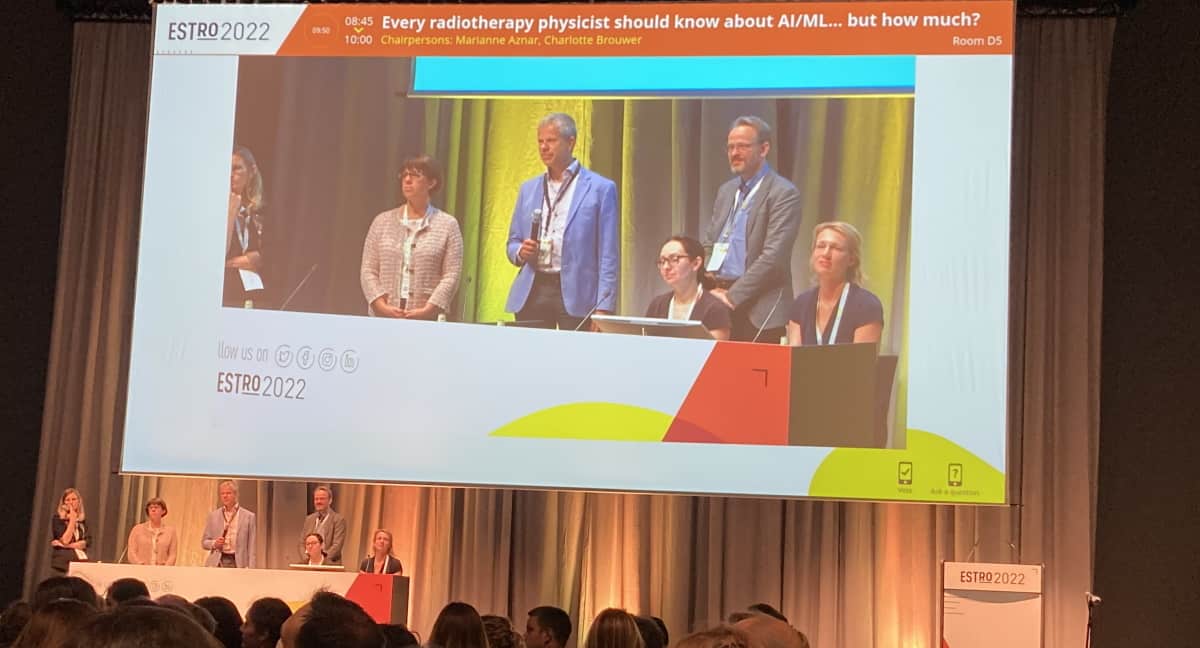Bridging the knowledge gap on AI and machine-learning technologies
22 Jun 2022
Medical physicists explored a range of education and training scenarios for AI and machine learning at last month’s ESTRO Annual Congress

How much is enough? How much is too much? These are questions that cut to the heart of a complex issue currently preoccupying senior medical physicists when it comes to the training and continuing professional development (CPD) of the radiotherapy physics workforce. What’s exercising management and educators specifically is the extent to which the core expertise and domain knowledge of radiotherapy physicists should evolve to reflect – and, in so doing, best support – the relentless progress of artificial intelligence (AI) and machine-learning technologies within the radiation oncology workflow.
In an effort to bring a degree of clarity and consensus to the collective conversation, the ESTRO 2022 Annual Congress in Copenhagen last month featured a dedicated workshop session entitled “Every radiotherapy physicist should know about AI/machine learning…but how much?” With several hundred delegates packed into Room D5 at the Bella Center, speakers were tasked by the session moderators with defending a range of “optimum scenarios” to align the know-how of medical physicists versus emerging AI/machine-learning opportunities in the radiotherapy clinic.
Just the basics or just the opposite?
Kicking off the debate was Wilko Verbakel, a senior medical physicist and associate professor at Amsterdam UMC in the Netherlands, who posited a light-touch response to the session’s headline question. The priority for medical physicists, he argues, is to work closely with the manufacturers of machine-learning software to surface more technical information – with a focus not on the algorithms, but rather on the data used for training and implementation of those algorithms.
“What we need to know – just the basics,” explained Verbakel. “[That means], what type of data [are] used for training the machine-learning algorithms? Where [do] the data come from geographically? And is the distribution of patient data well chosen for the patient population in your own centre?” He concedes, though, that the manufacturers can – and should – do a lot more to share the data used to train their proprietary algorithms. “In any case, we must test performance [of the machine-learning model] on our own datasets and ask how well does it compare.” Pitch perfect: Speakers at ESTRO 2022 make their case on education and training requirements to support AI/machine-learning innovations in radiotherapy. From left to right (standing): Charlotte Robert, Cristina Garibaldi, Wilko Verbakel and Carsten Brink. (Courtesy: Joe McEntee)
Pitch perfect: Speakers at ESTRO 2022 make their case on education and training requirements to support AI/machine-learning innovations in radiotherapy. From left to right (standing): Charlotte Robert, Cristina Garibaldi, Wilko Verbakel and Carsten Brink. (Courtesy: Joe McEntee)
 Pitch perfect: Speakers at ESTRO 2022 make their case on education and training requirements to support AI/machine-learning innovations in radiotherapy. From left to right (standing): Charlotte Robert, Cristina Garibaldi, Wilko Verbakel and Carsten Brink. (Courtesy: Joe McEntee)
Pitch perfect: Speakers at ESTRO 2022 make their case on education and training requirements to support AI/machine-learning innovations in radiotherapy. From left to right (standing): Charlotte Robert, Cristina Garibaldi, Wilko Verbakel and Carsten Brink. (Courtesy: Joe McEntee)A contrasting take – arguing that every radiotherapy physicist should also be a fully skilled data scientist – was elaborated by Charlotte Robert, an associate professor of medical physics at the Gustave Roussy Cancer Campus in Villejuif, France. Robert’s position acknowledges that AI and machine-learning technologies are already pervasive within today’s radiotherapy workflow, with applications spanning synthetic image generation, autocontouring, accelerated dosimetry, automated patient QA and real-time plan adjustment, among others.
When commissioning AI/machine-learning software, notes Robert, it is therefore vital for medical physicists to understand the technical specifications of new products in order to implement robust methodologies for solution acceptance. “This is really important for you to do your job properly,” she explained, “[as is] proposing intelligent data sets to test the algorithm under exhaustive conditions with the objective of identifying outliers.”
More broadly, Robert advocates the creation of tailored education programmes – for example, dual-skill training courses, starting at Master’s level – that integrate the granular detail and subtleties of AI/machine learning into the core medical physics curriculum. “The positive aspects of this change will enable many new skills in programming, data management and data engineering to stay in the loop,” she added.
Education, education, education
When the talking stopped, a show-of-hands audience vote suggests the consensus view of ESTRO delegates lies somewhere along a continuum between the positions elaborated by Verbakel and Robert (whose presentations opened and closed the workshop respectively). A case in point is the pitch presented by Cristina Garibaldi from the European Institute of Oncology (IEO) in Milan, Italy, advocating integration of AI-oriented education and training as standard for national medical physics curricula across Europe.
The medical physics expert (MPE), argues Garibaldi, has a pivotal role to play in driving the safe and efficient clinical implementation of AI/machine-learning technologies. “What is especially important,” she noted, “is for the MPE to have a basic knowledge of all the workflows for the development and application of machine-learning models. [In other words], data selection and management; model selection and regularization; model training; and finally model validation.”
At the same time, cross-disciplinary collaboration underpins successful exploitation of AI/machine learning in the clinic. Owing to their skills in mathematics, computing and statistics, adds Garibaldi, MPEs are in a position to act as a bridge between radiation oncologists, software vendors, data scientists and engineers. In this way, she noted, “While most clinical MPEs will not be involved in developing AI solutions [per se], they will need to understand how machine-learning models are configured, how to validate their performance, and how to design appropriate QA tests.”
Garibaldi, for her part, heads up the taskforce – working under the auspices of ESTRO and the European Federation of Organizations for Medical Physics (EFOMP) – that earlier this year unveiled a new core training curriculum for MPEs in radiotherapy. The revamped guidance addresses a host of emerging clinical applications, among them MR/RT, FLASH radiotherapy and personalized treatments, as well as AI-enabled automation and methods for advanced quantitative data analysis in machine learning.
The broadened scope of the ESTRO/EFOMP document reflects the fact that AI fundamentally changes the day-to-day practice of MPEs, while providing a framework for European countries to shape their national training and CPD programmes in response to the latest technology innovations in AI/machine learning. Garibaldi concluded: “To overcome the weakness of limited AI knowledge, potentially threatening the role of MPEs, AI should be integrated in medical physics education programmes through dedicated teaching and training courses in hospitals.”READ MORE

The last word, though, goes to Carsten Brink, professor of medical physics at the University of Southern Denmark in Odense, who argued that “a bit more than the basics, enough so you can communicate with an independent expert” is how the medical physics community should address its current knowledge gap in AI/machine-learning technologies.
“Should all of us be skilled in data science – I don’t think so,” Brink concluded in his take-home message. “We have a huge tradition of collaborating between different knowledge bases – oncologists, medical physicists and so on. And why are we collaborating? Because we are utilizing each other’s skills – so don’t spend all your time becoming a full data scientist.”
from physicsworld.com 1/7/2022
Δεν υπάρχουν σχόλια:
Δημοσίευση σχολίου